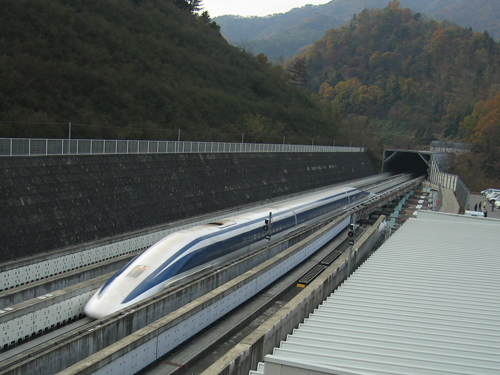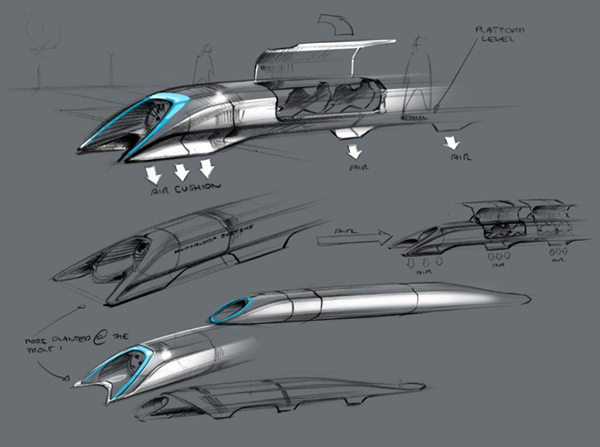Tube Trains
by Andrew Boyd
Today, we go tubular. The University of Houston presents this series about the machines that make our civilization run, and the people whose ingenuity created them.
You can be forgiven if you've never heard of the 1973 television film Genesys II.It was a project undertaken by Gene Roddenberry shortly after his original Star Trek TV series was cancelled. The film was intended as a pilot for a new science fiction series, but it never got off the ground. Perhaps it was because characters roamed an apocalyptic world in tube-enclosed trains instead of boldly flying where no spaceship had flown before.
Still, the show's tube trains were one of the more captivating futuristic concepts, capable of travelling at unheard of speeds. And unlike the starship Enterprise, tube trains have today emerged as serious scientific fodder.
Accelerated ground transport isn't new. High speed rail's been around for decades, with record speeds reaching 300 miles an hour. But that's a leisurely pace for tube train enthusiasts who already envision speeds in excess of 750 miles an hour — just under the speed of sound.

A bullet train in motion. Photo Credit: Wikimedia Commons
Achieving that kind of speed isn't easy. One of the biggest problems is air resistance or drag. When we double the speed of an object, the power required to push it through the air goes up by a factor of eight. One way to fight drag is to get the air out of the way. That's why tube trains are, well, in tubes, where air can be pumped out to create a near vacuum.
.png)
Conceptual rendering of a tube train. Photo Credit: Evacuated Tube Transport Technologies
One notable project involves a route running from Los Angeles to San Francisco. As envisioned, the 350 mile trip would take a mere 35 minutes in sleek capsules carrying 28 passengers. A new capsule would be loaded and leave the station every two minutes. If it sounds a lot like loading a roller coaster, it is. In fact, the roller coaster analogy works in other ways.

Conceptual rendering of tube train capsules. Photo Credit: SpaceX Paper, "Hyperloop Alpha"
When a fast moving coaster makes a turn, you feel it. It's all part of the fun. But it's not what most travelers are looking for. Designers of high speed trains realized early on how even small curves and hills can make people nauseous. And the faster we go, the more we feel even the slightest variations in the line of travel. It's simply a fact of physics. So to make high speed travel tolerable, we need to carve a straight path. Mountains, hills, and property rights all pose serious obstacles when it comes to speed. Following existing roads or train tracks isn't going to work. Imagine navigating your favorite freeway interchange at 750 miles an hour. You'd get squished.
Tube trains face many challenges, not the least of which are economic. Interestingly, the ideas that've been put forward claim tube trains would be less expensive than high speed rail. The reality is we don't know. A host of engineering challenges must be met before the first tube train leaves the station. But no big breakthroughs seem required. Tube trains may not be scientific reality, but they're certainly not science fiction either.
I'm Andy Boyd at the University of Houston, where we're interested in the way inventive minds work.
(Theme music)
Hyperloop Alpha. From the SpaceX website: http://www.spacex.com/sites/spacex/files/hyperloop_alpha-20130812.pdf. Accessed February 4, 2015.
R. Salter. 'The Very High Speed Transit System.' 1972 working paper from the Rand Corporation that can be found at: http://www.rand.org/content/dam/rand/pubs/papers/2008/P4874.pdf. Accessed February 4, 2015.
Why ET3? From the Evacuated Tube Transport Technologies website: http://www.et3.com/. Accessed February 4, 2015.
This episode first aired on March 5, 2015.